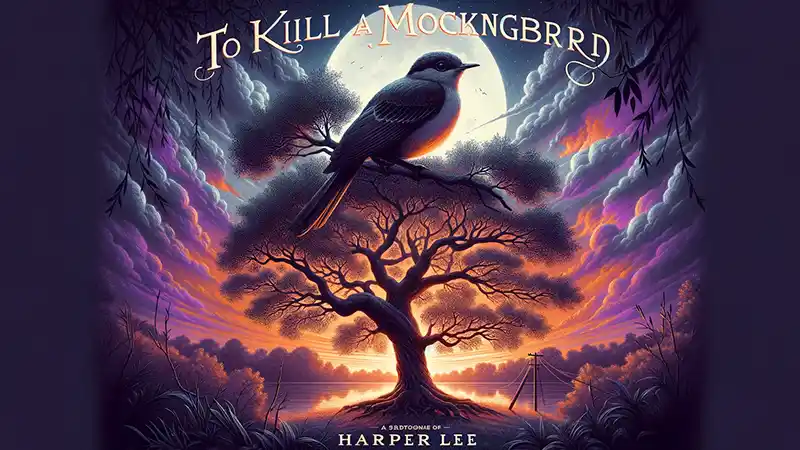This lesson plan is designed for Chapter 10 of To Kill a Mockingbird, with a focus on reviewing and understanding symbolism within this pivotal chapter of the novel. After a thorough reading and discussion of Chapter 10, students will have the opportunity to engage in a deeper exploration of the key symbols in the narrative: the mockingbird and the mad dog. They can choose between two activities to demonstrate their understanding. The first option is to practice writing PEEL (Point, Evidence, Explain, Link) paragraphs, allowing them to analytically dissect and articulate the significance of these symbols in relation to the novel’s themes. Alternatively, for a more creative approach, students can construct a collage that visually represents the same symbols, offering a unique perspective on their symbolic meanings. Both activities are aimed at enhancing students’ comprehension of symbolism in literature and encouraging them to connect literary themes to broader societal issues.
Learning Goals
- I will be able to articulate the symbolic meanings of the mockingbird and the mad dog in To Kill a Mockingbird.
- I will be able to demonstrate creativity and originality in representing the symbols of the mockingbird and the mad dog.
Materials
Process
- Review symbolism.
- Explain the importance of this chapter in terms of its symbolism. As students read, tell them to pay close attention to Atticus’ explanation of why it is wrong to kill a mockingbird and the scene where he shoots the mad dog.
- Read chapter 10.
- Ask students to complete either Activity A or Activity B.
Symbolism
Symbolism is a literary device where an object, person, or situation is used to represent something else, typically an abstract idea or concept. It involves the use of symbols to impart deeper meanings than the literal sense of the text or image. Symbols are often used to convey complex ideas and emotions in a more digestible and relatable form.
Two examples of symbolism that we encounter frequently are:
A Heart as a Symbol of Love: The heart shape is universally recognized as a symbol of love and affection. It’s often used in various forms of art, literature, and everyday life to represent romantic love, deep affection, and emotional connection. Despite the anatomical heart being quite different in appearance, this simplified shape has become the quintessential symbol to convey the essence of love.
A Dove as a Symbol of Peace: The dove, often depicted with an olive branch, is a widely recognized symbol of peace and harmony. This symbolism has biblical origins, stemming from the story of Noah’s Ark, where a dove returns with an olive branch to signify the end of the flood and the restoration of peace on Earth. Over time, the dove has become a universal symbol for peace, used in various cultural, political, and social contexts to represent the desire for harmony and the cessation of conflict.
Activity A: PEEL Writing
Explore the symbols by writing one PEEL paragraph about the mockingbird as a symbol and one PEEL paragraph about the mad dog as a symbol. Be sure to follow the point, evidence, explain, link model and include quotes from the text as your evidence.
Need help with PEEL? Click here.
Assessment
- Understanding of Symbols (3 points)
- Use of Evidence (2 points)
- Analysis and Interpretation (3 points)
- Coherence and Structure (1 point)
- Writing Quality (1 point)
Total: /10
Activity B: Create a Symbols Collage
Create a collage that represents the mockingbird and mad dog symbols. Use a mix of magazine cutouts, drawings, and printed images. Iincorporate elements that represent the innocence and destruction/racism associated with these symbols, respectively.
Materials Needed: Magazines, newspapers, glue, scissors, a large sheet of paper.
Assessment
- Symbol Representation (3 points)
- Creativity and Originality (2 points)
- Connection to Themes (3 points)
- Visual Appeal and Composition (1 point)
- Effort and Engagement (1 point)
Total: /10



